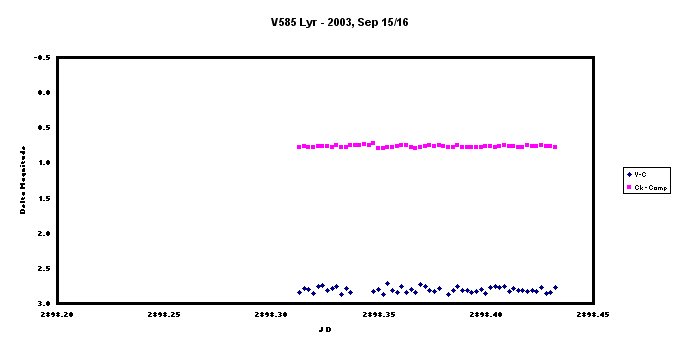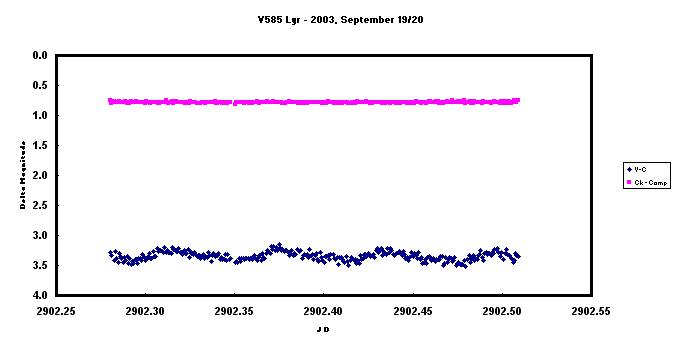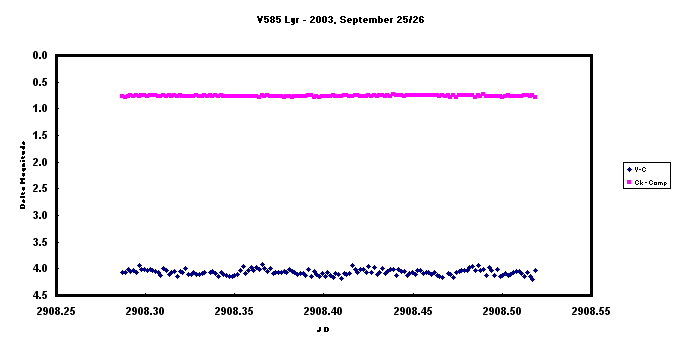The resulting light curve is depicted below. It
shows a rather constant object, indicating that the
present outburst either is a normal outburst, or
that superhumps have yet to develop.

The night of September
15/16, 2003 was not very well suited for CCD
photometry, due to the presence of thin clouds. I
nevertheless decided to launch another observing
session on V585 Lyr, lasting for nearly 3 hours. I
made CCD exposures of 50 sec each, using the same
equipment as described above. To increase the photon
count, I decided to perform image stacking, grouping
each time 3 exposures. The resulting light curve is
shown below. Although there is somewhat more
low-amplitude variation in the curve, it seems that
superhumps have not (yet) developed at this stage of
the outburst.

It was clear again on
September 16/17, 2003, with much better sky
conditions than yesterday. Using the 0.35-m f/6.3
telescope and ST-7 CCD, I could follow V585 Lyr for
3.8 hours (unfiltered photometry). Similar to the
nights before, the light curve (see figure below) is
not showing modulations with an amplitude > 0.1
mag. I used the PDM technique to look for
periodicities in the above (and combined) light
curves, but no significant signal could be detected.

Due to a business
trip, I had to skip the next couple of nights.
Exactly then, superhumps started to develop, and
V585 Lyr was identified as a new UGSU type variable
with a (short) superhump period of 0.0603 d
[vsnet-campaign-dn 3939].
My next opportunity
to observe V585 Lyr came on September 19/20, 2003,
when the sky was again very clear. Superhumps were
very well developed by that time, and are easy to
recognize in the light curve below.

I continued to
observe V585 Lyr on several follow-up nights, and
all observation light curves are shown below.



